
Age-Related Reactions to a Traumatic Event
Describes how young children, school-age children, and adolescents react to traumatic events and offers suggestions on how parents and caregivers can help and support them.
November was first declared as National Homeless Youth Awareness Month in 2007. Since then, November has been a time to acknowledge those children and families experiencing homelessness. As many as 2.5 million youth per year experience homelessness. Along with losing their home, community, friends, and routines as well as their sense of stability and safety, many homeless youth are also victims of trauma. While trying to survive on the streets, youth are exposed to countless dangers, with an increased likelihood of substance abuse, early parenthood, impulsivity, depression, posttraumatic stress disorder, and a vulnerability to being trafficked.
The National Child Traumatic Stress Network (NCTSN) has compiled a list of helpful resources for parents and caregivers, children and teens, mental health providers, child welfare workers, juvenile justice professionals, and policy makers.

Describes how young children, school-age children, and adolescents react to traumatic events and offers suggestions on how parents and caregivers can help and support them.
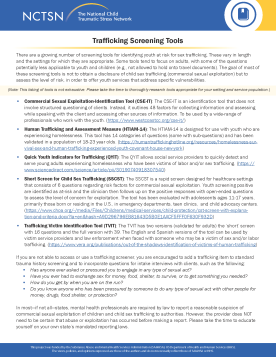
Offers a list of screening tools for identifying youth at risk for sex trafficking.
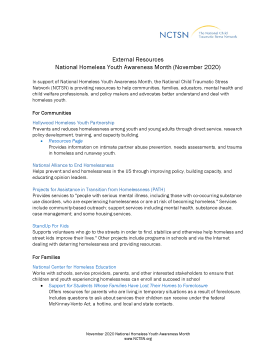
Provides external resources related to National Homeless Youth Awareness Month.
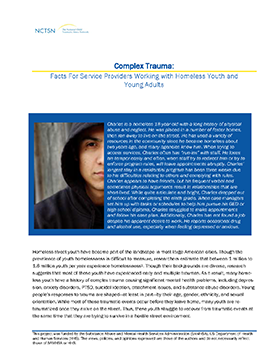
Offers information to service providers on how to support teens and young adults who are experiencing homelessness with a trauma history.
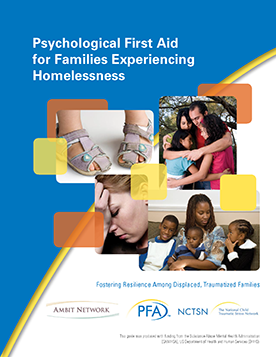
Is an adapted version of Psychological First Aid for those working with families experiencing homelessness.

Is an adapted version of Psychological First Aid for those working with youth experiencing homelessness.
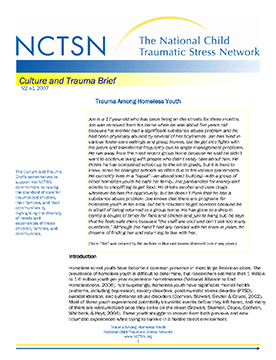
Discusses the challenges traumatized youth face when they are living on the street, including the relationship between trauma and youth homelessness, and offers suggestions for service providers who want to engage these young people in treatment.
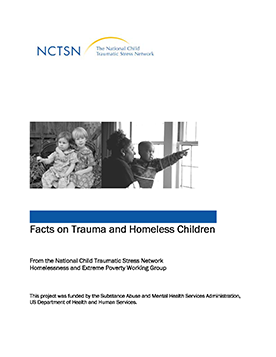
Provides background on the issues of trauma among homeless children, including what homelessness looks like in America, the interplay between trauma and homelessness, how programs and services help families exposed to trauma, and providing trauma-specific services.